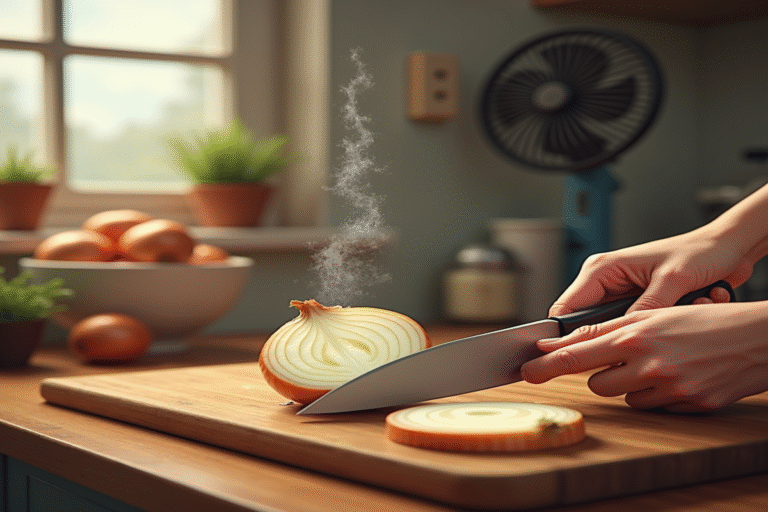The Chemistry Behind Your Kitchen Tears
We’ve all been there—knife in hand, slicing an onion, when suddenly our eyes start to burn and tears stream down our faces. What seems like the vegetable’s revenge is actually a fascinating chemical defense mechanism that has evolved over thousands of years. But why exactly does this humble kitchen staple make us weep, and how can we outsmart it?
The Surprising Science of Onion Tears
When you cut into an onion, you trigger a complex chemical reaction. Onion cells contain sulfur compounds and an enzyme called alliinase, which are kept in separate compartments. When your knife damages these cells, the compounds mix and create syn-propanethial-S-oxide, a volatile sulfur compound that becomes an airborne gas.
This irritating gas rises toward your eyes, where it reacts with the water in your tears to form a small amount of sulfuric acid. Your tear glands immediately respond by producing more tears to dilute and wash away the irritant, which is why you start to cry.
This chemical defense evolved to protect onions—actually modified underground stems—from being eaten by animals. The fact that it makes humans cry is just an accidental side effect of our cooking habits!
Not All Onions Are Created Equal
The tear-producing power of onions varies by type:
- Yellow onions usually contain the highest concentration of the tear-producing compounds.
- Sweet onions like Vidalias have lower levels of sulfur compounds.
- Red onions fall somewhere in the middle.
- Green onions (scallions) contain minimal amounts, so they rarely make you cry.
Science-Backed Ways to Stop the Tears
1. The Cold Approach
Refrigerate your onions for 30 minutes before cutting. The cold temperature slows down the enzymatic reactions and reduces the release of the volatile gas. The molecules are less likely to become airborne when cold, meaning fewer will reach your eyes.
2. The Sharp Solution
Use the sharpest knife possible. A dull knife crushes more cells rather than slicing cleanly, releasing more tear-producing chemicals. A sharp blade minimizes cell damage and reduces the amount of gas released.
3. The Water Shield
Cut onions under running water or submerge them before cutting. The water helps dissolve the gas compounds before they reach your eyes. Some chefs even cut onions in a bowl of shallow water!
4. The Ventilation Hack
Turn on a fan or open a window to blow the gas away from your face. Good airflow moves the volatile compounds away from your eyes, greatly reducing irritation.
5. The Acid Neutralizer
Some people swear by squeezing lemon juice or vinegar on your cutting board. The acid may help neutralize some sulfur compounds released from the onion.
6. The Physical Barrier
Wearing swimming goggles may look silly, but they provide a strong barrier that stops the gas from reaching your eyes. Some companies even sell “onion goggles” made just for this purpose!
7. The Root Strategy
Leave the root end intact when cutting. The root has the highest concentration of sulfur compounds, so cutting it last minimizes your exposure to the tear-causing chemicals.
Does Bread in Your Mouth Actually Work?
You may have heard of the old trick of holding bread in your mouth while cutting onions. The idea is that the bread absorbs some of the gas before it reaches your eyes. While it’s not the most effective method, some people say it helps—though others may give you strange looks!
The Future of Tearless Cooking
Scientists have developed “tearless onions” through selective breeding. The Sunion®, launched in the United States in 2018, is an onion variety that produces fewer tear-inducing compounds and gets sweeter during storage.
Next time you find yourself tearing up while preparing dinner, remember: you’re not just cutting an onion—you’re experiencing a remarkable biochemical defense developed over millions of years of evolution. Armed with these science-based techniques, you can make your favorite onion-filled recipes with clearer eyes and drier cheeks!





